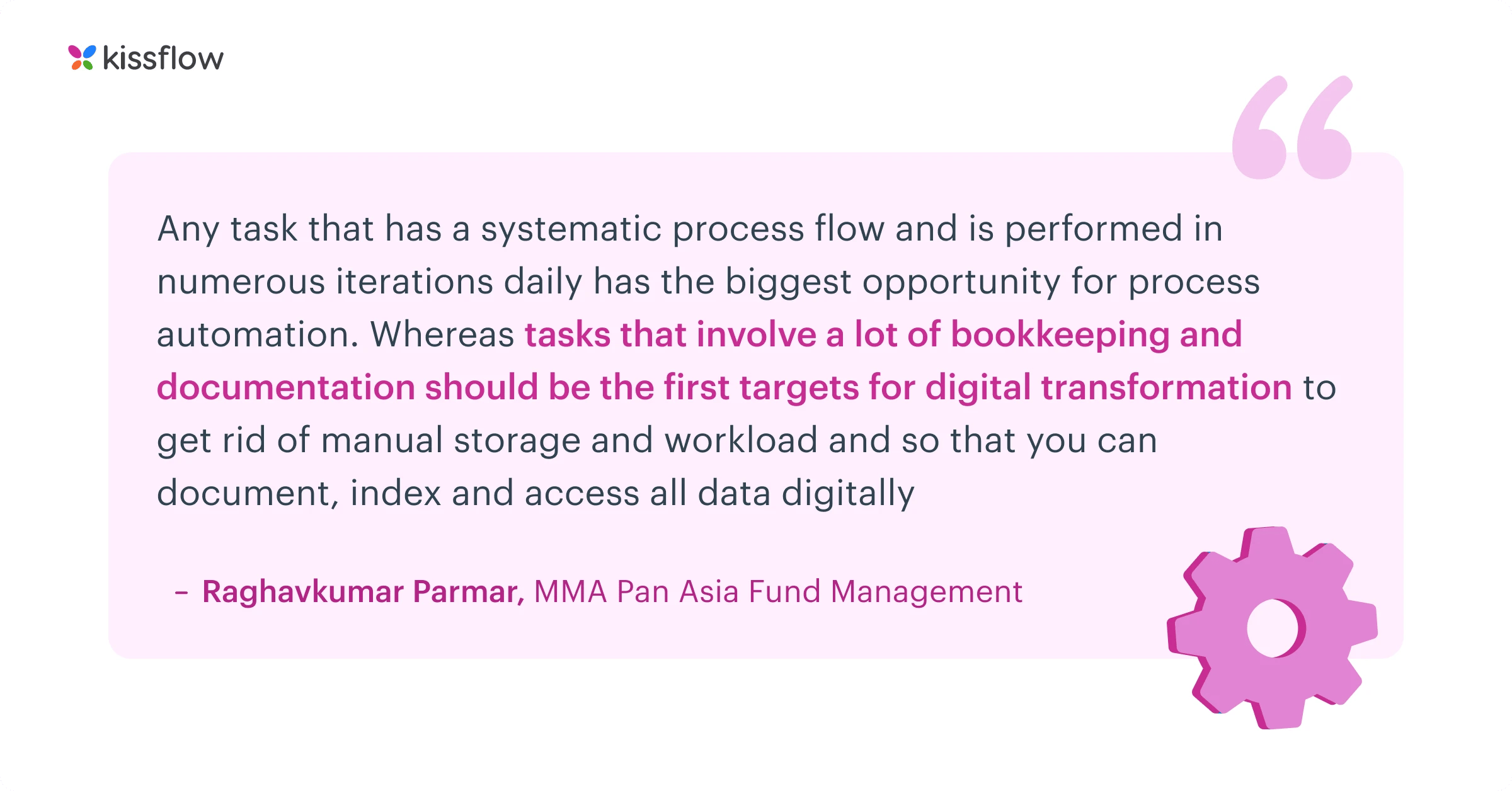For CIOs and BTPs, creating and documenting processes isn't just a task—it's a strategic mission. It's the blueprint for future success.
Our blog is crafted for these tech leaders. It simplifies the art of process documentation with a handy 10-step checklist. This guide arms CIOs and BTPs with the knowledge they need to build a solid foundation for growth and excellence, ensuring their organizations flourish in our digital world.
What is business process documentation?
Business process documentation is a complete description of a business process using words, images, and symbols to designate exactly how the process should function in an ideal environment. The documentation should include what data is required to complete the process, what the workflow is, and any decisions that need to be made.
To be useful and effective, business processes need to be carefully designed, structured and documented. By capturing as much detail about the business process as possible, you can achieve the desired results.
While you may assume that process documentation is just a bureaucratic and unproductive aspect, it’s actually incredibly useful in ensuring the success of a business process.
You can refer to this document for process improvement, as it will be able to provide you with a consensual and reliable basis to understand the necessary improvements that need to be done to optimize the overall performance.

Steps to create a successful business process documentation

Step 1: Process name
To get the ball rolling, decide on the process name and jot down its description along with the main goal.
Step 2: Process boundaries
Identify the starting and ending points of the business process. You have to know what triggers the process and how it gets finished before you can start adding the other smaller details.
Step 3: Process outputs
You should decide on the process outputs or the final result that you will get when the process is finished.
Step 4: Process inputs
Select the data that is needed for the process to execute. You should also define where the input data comes from.
Step 5: Process activities
List out all the activities or steps that need to be performed to take the process from the start to the finish point.
Step 6: Process organization
Take all the activities you listed in the step above and sequence them according to the business process flow. Identifying all the key decision points in your process at this stage is important.
Step 7: Process review
Verify the sequence of activities you created in the last step to ensure it aligns with the process boundaries you created in the second step.
Step 8: Process roles
With the entire process mapped out, you now need to select the different roles (or team members) who will complete the different activities.
Step 9: Create a flowchart
With everything planned out, create a clear flowchart of the process to make it easily understandable for everyone involved.
Step 10: Final Review
The final step is to discuss the process flow with all stakeholders and get the necessary approvals to set the process in motion.
Creating documentation for business process management helps you see how it all comes together when the process is executed in an organization.
For instance, here is how the payroll process would be documented
- Process name: Payroll
- Process boundaries: Employees get paid for monthly work through automatic bank transfer
- Process outputs: Paychecks and monthly payroll reports
- Process inputs: Employee time cards, leave records, and bank account details
- Process activities: Verifying employee time cards, checking for leave applications, adding bank account details, transferring monthly salary to respective accounts, and generating payroll reports
- Process roles: Employee, manager, and the HR department
How Kissflow can help document your process
Kissflow is a low-code platform that helps you build customized business process management software. It can turn workflows into automated tasks and help you create automated business process documentation. With business automation software, companies can unify fragmented processes, eliminate redundancies, and ensure consistent execution across departments. This creates a foundation for scalable operations and better decision-making at every level.
Solve your workflow challenges with Kissflow platform and optimize your team's productivity.
Instead of mapping business processes in a standalone documentation tool, you can document, design, automate, and manage processes directly in Kissflow.
Frequently Asked Questions (FAQs)
What are the key steps in documenting business processes?
-
Identify process objectives, boundaries, and stakeholders.
-
Map out each step, decision point, and role involved using visual tools.
-
Validate with participants and establish a review cycle to keep it current.
How does process documentation improve efficiency?
-
Clarifies roles and responsibilities, reducing confusion and rework.
-
Standardizes best practices across teams for consistent outcomes.
-
Speeds up onboarding and supports continuous process improvement.
What are the best tools for process documentation?
-
Lucidchart / Miro / Visio – for flowcharts and process diagrams.
-
Notion / Confluence / ClickUp – for collaborative documentation.
-
Celonis / UiPath Process Mining – for auto-generating real workflows.
What are common challenges in documenting workflows?
-
Capturing undocumented or "tribal" knowledge from experts.
-
Keeping documentation updated as processes evolve.
-
Balancing between too much and too little detail.
How do I create process documentation templates?
-
Use consistent sections: overview, roles, steps, exceptions, and metrics.
-
Incorporate visuals like flowcharts and real examples.
-
Add version control and make it easy to update regularly.



